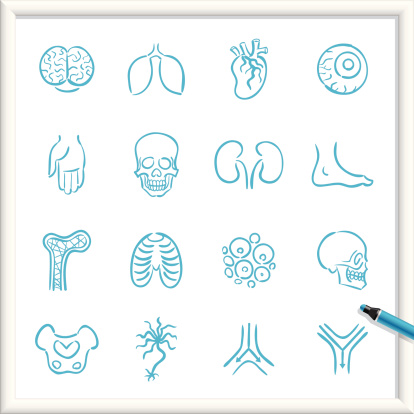托福分数测试HOT
托福课程优惠HOT
托福正价课试听0元
新托福机考练习NEW
0元讲座HOT
新版托福入门课程HOT
托福入门导学NEW
4000人报
托福机经
PDF版
TPO练习
官方授权
资料下载
826套
专业测评
40118人已测
高分经验
1193帖

扫码免费领资料
托福全科备考资料
免费水平测试及规划

扫码关注掌握一手留学资讯
回复XDF免费水平测试
托福阅读背景材料/知识之实验室做出来的肺Making lungs in the lab,更多托福阅读背景材料/知识尽在新东方在线托福考试频道!

Biomedical engineers have built many types of human organs in the lab, but they've lagged on lung tissue--until now. Two new studies have used very different approaches to do the job.
One team has grown lung cells that performed their gas-exchange functions when transplanted into living rats. The study provides proof of principle that such regenerated tissue may one day be used to treat patients with serious lung disorders.
The other has built a microfluidic chip that mimics lung function, resulting in a biologically relevant model for testing medicines for lung disorders or conducting toxicity screens for nanoparticles.
"Lungs don't heal themselves, and when we transplant lungs, patients tend to do very badly," says Laura Niklason, a biomedical engineer at Yale University in New Haven, Connecticut. Her group wanted to make lung tissue from the body's own cells, to prevent rejection when transplanted.
They decided to grow the cells on the lung's extracellular architecture rather than on synthetic cell matrices--the approach most researchers have focused on until now.
Training for cells
Niklason's team first gently removed the lung cells from their support architecture--made mostly of collagen--leaving it intact. They then added eight or nine cell types back onto the matrix and cultured them for eight days.
To the team's surprise, the natural extracellular matrix directed the cells to their correct locations, essentially "training" them to function appropriately. Finally, the researchers transplanted the tissue into rats.
Much like Niklason's study, published online June 24 in Science, two other recent studies used such decellularized matrices rather than synthetic ones. What has never been done before, however, says Peter Lelkes, a tissue engineer at Drexel University in Philadelphia, Pennsylvania, is transplanting the bioengineered lung tissue into a living organism.
"We were actually kind of surprised at how well they worked," Niklason says. The transplants functioned for about two hours, fulfilling the lungs' key function of exchanging oxygen for carbon dioxide.
In practice, however, lung cells--especially from older, ill patients--won't grow well enough in culture, but will have to be produced from stem cells or induced pluripotent stem (iPS) cells, she says.
"What we've really done is developed the technological and scientific underpinnings so that we can bring stem-cell biology to bear on this problem."
Angela Panoskaltsis-Mortari, who studies lung injury and repair at the University of Minnesota, Minneapolis, agrees. Panoskaltsis-Mortari, an author on one of the other recent lung-engineering studies using a similar matrix, and her group presented data at a conference last month showing that iPS cells can differentiate into a key type of lung cell when grown on decellularized matrices.
"It's a really ideal model" for studying lung differentiation, lung infection and related topics, she says.
Mechanical mimicry
In the second study in Science, researchers from Harvard University in Boston, Massachusetts, created a chip 1 to 2 centimeters long in which a 1 millimeter-wide channel, coated with human lung cells on the inside and overlaid with human blood capillaries on the outside, mimicked the air sacs, or alveoli, of the lungs.
The idea, says biomedical engineer and study leader Donald Ingber, was to create a way to do high-throughput screening--used by the pharmaceutical industry to screen large numbers of molecules--but in a system that's biologically closer to human tissue than to a petri dish.
What is most impressive about the chip, says Michael Shuler, a biomedical engineer at Cornell University in Ithaca, New York, is that it mimicked not just the physiology of the lung, but also the mechanical forces that act on lung cells as the chest expands and contracts with each breath.
The group also tested the chip as a system for determining how different types of nanoparticles penetrate the lungs, and how bacteria enter the lungs to cause infection. Ingber says he and his colleagues are now contacting pharmaceutical companies to find out how the device can best be used.
"As a system by itself, it could be used to test drugs very directly," says Shuler. Only one out of ten drugs in development makes it successfully through clinical trials, he adds.
"Maybe by having a more authentic system, you change the odds" to more like three out of ten, he says. "It doesn't have to be perfect to be valuable."

 资料下载
资料下载
2021-2025托福机经试题|答案|范文下载
发布时间:2024-02-21关注新东方在线托福
回复【XDF】获取
托福全科备考资料大礼包
发布时间:2024-02-21关注新东方在线托福
回复【XDF】获取
托福正价课试听课程包
发布时间:2024-02-21关注新东方在线托福
回复【XDF】获取
托福定制备考规划
发布时间:2024-02-21关注新东方在线托福
回复【XDF】获取
托福TPO免费模考
发布时间:2024-02-21关注新东方在线托福
回复【XDF】获取
托福免费水平测试
发布时间:2024-02-21关注新东方在线托福
回复【XDF】获取
托福写作新题型模拟题+范文汇总[ETS发布]
发布时间:2023-07-30关注新东方在线托福
回复【XDF】获取
2023全年托福机经PDF版下载
发布时间:2023-06-17关注新东方在线托福
回复【XDF】获取
2022全年托福机经PDF版下载
发布时间:2023-06-17关注新东方在线托福
回复【XDF】获取
2022全年写作托福机经整理
发布时间:2023-01-13关注新东方在线托福
回复【XDF】获取
2022年托福考后题目回忆
发布时间:2023-01-13关注新东方在线托福
回复【XDF】获取
托福口语黄金80题附录音
发布时间:2023-01-13关注新东方在线托福
回复【XDF】获取
新东方IBT写作网络课堂录音[.rar]
发布时间:2023-01-13关注新东方在线托福
回复【XDF】获取
21天托福听力提升计划
发布时间:2023-01-13关注新东方在线托福
回复【XDF】获取
不怕跑题偏题,这份写作资料请收好
发布时间:2023-01-13关注新东方在线托福
回复【XDF】获取
托福阅读提分技巧锦囊妙计
发布时间:2023-01-13关注新东方在线托福
回复【XDF】获取
口语拖后腿?因为你缺少这套万能句式资料
发布时间:2019-11-01关注新东方在线托福
回复【XDF】获取
攻破托福听力难关的资料包
发布时间:2023-01-13关注新东方在线托福
回复【XDF】获取
看剧学英语,经典美剧一键获取
发布时间:2019-11-01关注新东方在线托福
回复【XDF】获取
原版外刊资源合集|精心打包整理
发布时间:2019-11-01关注新东方在线托福
回复【XDF】获取

关注新东方在线托福,
回复【XDF】获取大礼包

 推荐阅读
推荐阅读
回答:分数进入瓶颈期,我想你可以这么做。1、提高自己的分析总结能力,题目做完之后仔细分析错误原因,归纳错题,看看是不是哪个类型的题目容易出错。2、建立自查自纠能力
来源 : 新东方在线 2020-08-18 16:13:07 关键字 :
回答:不可以的,want to do是固定搭配不能变,后面的to cook是表目的,所以都不可以用doing的形式替代。
来源 : 新东方在线 2020-08-18 16:01:48 关键字 :
如果我写作写了一个人aperson,后面想说他的努力,后面用什么代词指代呢,是his?her?ones?hisorher?回答:你可以写hisorher。
来源 : 新东方在线 2020-08-18 15:54:24 关键字 :
回答:是的。morphlogical是形态学,生态学是ecology。你好,Morpheus是古希腊梦神睡神的名字。
来源 : 新东方在线 2020-08-18 15:51:16 关键字 :
回答:独立写作,建议350、400,不超过450,综合写作250左右。
来源 : 新东方在线 2020-08-18 15:46:51 关键字 :



 资料下载
资料下载
关注新东方在线托福
回复【XDF】获取
关注新东方在线托福
回复【XDF】获取
关注新东方在线托福
回复【XDF】获取
关注新东方在线托福
回复【XDF】获取
关注新东方在线托福
回复【XDF】获取
关注新东方在线托福
回复【XDF】获取
关注新东方在线托福
回复【XDF】获取
关注新东方在线托福
回复【XDF】获取
关注新东方在线托福
回复【XDF】获取
关注新东方在线托福
回复【XDF】获取
关注新东方在线托福
回复【XDF】获取
关注新东方在线托福
回复【XDF】获取
关注新东方在线托福
回复【XDF】获取
关注新东方在线托福
回复【XDF】获取
关注新东方在线托福
回复【XDF】获取
关注新东方在线托福
回复【XDF】获取
关注新东方在线托福
回复【XDF】获取
关注新东方在线托福
回复【XDF】获取
关注新东方在线托福
回复【XDF】获取
关注新东方在线托福
回复【XDF】获取

 阅读排行榜
阅读排行榜
 相关内容
相关内容